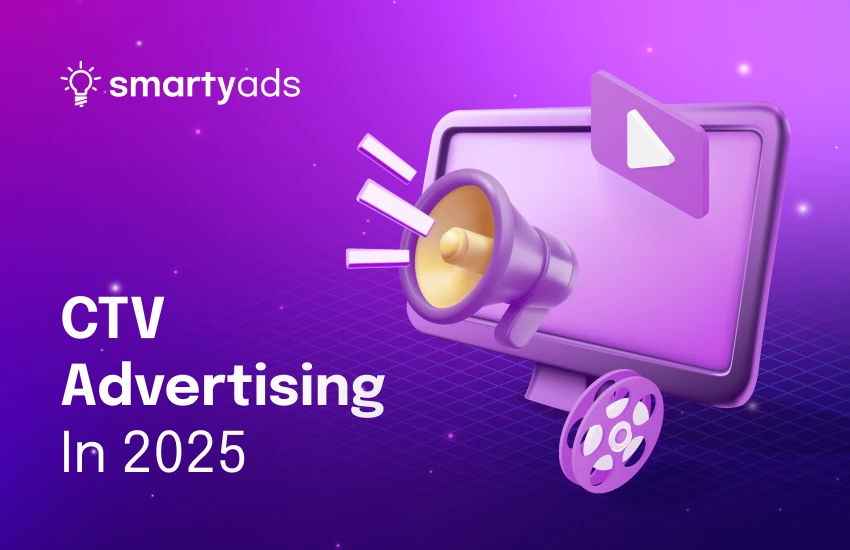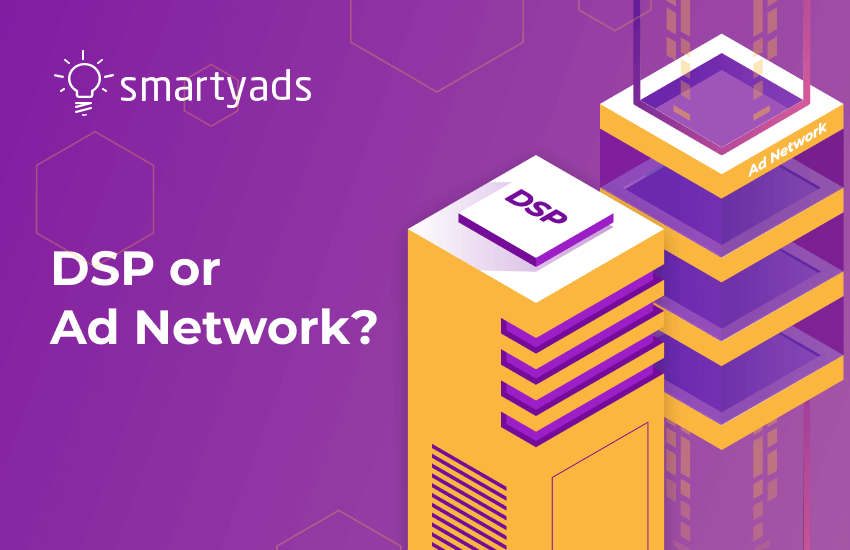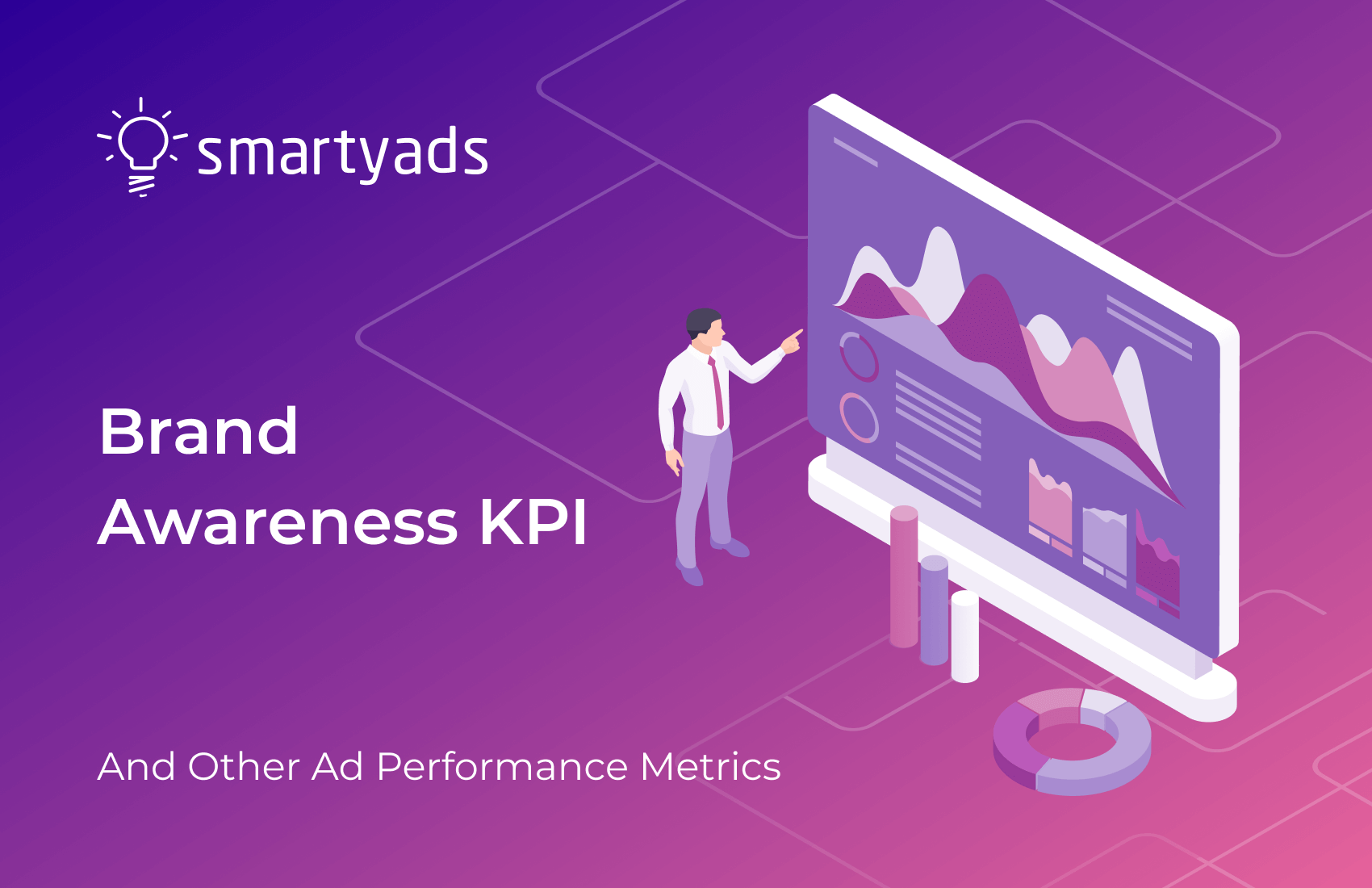CTV advertising is changing how brands speak to people. Traditional TV tied viewers to fixed schedules. Connected TV broke those limits. Now content is available anywhere, anytime, on any device.
Cable and linear TV are losing ground fast. Viewers turn to connected devices because they want freedom, control, and choice. This shift changes digital marketing at its very core.
For advertisers, it opens new doors. Campaigns can finally be precise, measurable, and engaging at the same time. CTV marketing isn’t the future anymore — it’s already here. Let’s see how it works today and why brands trust it to deliver results.

What is CTV advertising?
CTV advertising means ads on Internet-connected TVs. Think Roku, Apple TV, Fire TV, or a smart TV at home. Unlike old linear TV, it’s flexible and easy to target. Brands decide who sees the ad, can track results instantly, and reach people on the biggest screen in their living room.
How does CTV advertising work?
CTV advertising runs on Internet-connected TVs through streaming apps and platforms. Instead of a single broadcast sent to everyone, ads are delivered individually to each viewer.
The process starts when a brand sets campaign goals. Advertisers choose targeting options such as age, gender, location, income, or viewing habits. They also decide on budget, ad format, and frequency caps.
When a user opens an app like Hulu, Roku, or YouTube TV, the system sends an ad request. This request contains anonymized data about the viewer. An ad server or demand-side platform then matches that data with the right campaign.
The decision happens in real time, within milliseconds. The winning ad is shown before, during, or after the video content. Formats can include pre-roll, mid-roll, or even interactive ads with QR codes.
What makes it unique is measurement. Every impression is tracked. Advertisers can track how many people stayed until the end, who engaged, and who took action. It’s like watching the full path — from the first glance at the screen to a click, a scan, or a conversion.
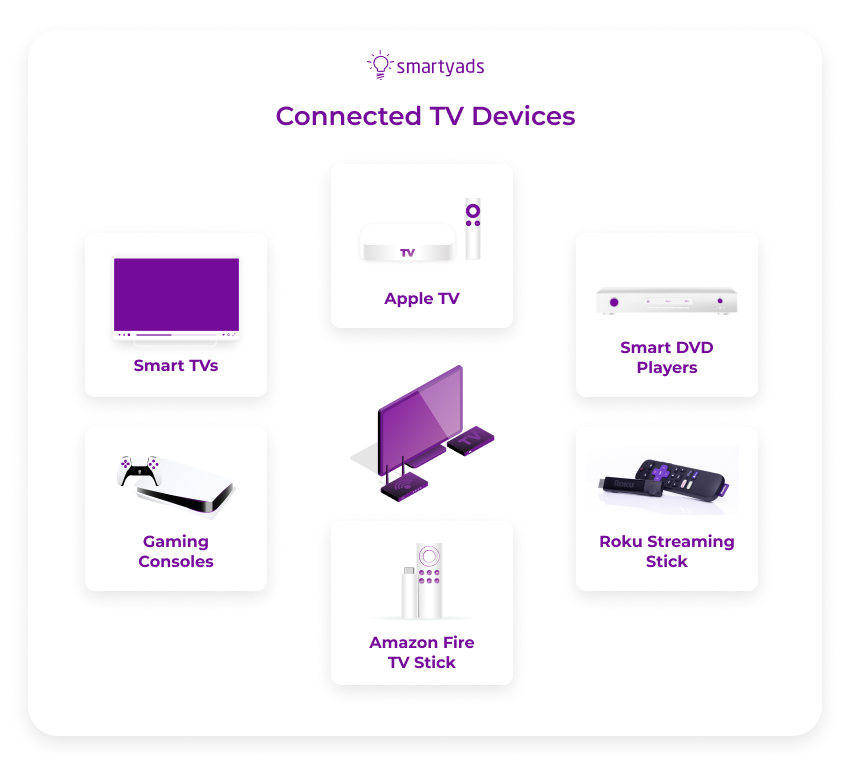
Simply put, CTV advertising keeps the reach of TV but adds the focus of digital. Brands don’t waste impressions. They show the right message to the right people, exactly when it matters.
Here’s how the process works step by step:
Campaign setup
The brand defines goals, budget, and audience. Targeting can be by age, gender, interests, income, or even zip code.
Ad request
When a viewer starts streaming on a platform like Roku, Apple TV, or Hulu, the system sends an ad request with anonymized data about that user.
Real-time decision
An ad server or demand-side platform compares the request with available campaigns. In milliseconds, it selects the most relevant ad.
Ad delivery
The winning CTV advertising plays before, during, or after the chosen content. Formats may include pre-roll, mid-roll, or even interactive ads with QR codes.
Measurement
Every impression is tracked. Advertisers see who watched the ad, how long they watched, and what actions they took.
OTT vs CTV vs PTV: key differences and how they work
Digital advertising has outgrown traditional TV. People no longer sit and wait for scheduled shows — they stream what they want, when they want. Brands have to follow this shift. That’s where OTT, CTV, and PTV step in. They may sound alike, but each plays a different role in the same puzzle.
OTT (Over-the-Top) is all about the content. It’s any video that comes through the Internet without cable or satellite. Watching Netflix, Hulu, or Disney+? That’s OTT. For advertisers, it means huge ad space across premium shows, movies, and live events. Ads can run before, during, or even as branded content inside the apps.
CTV (Connected TV marketing) is about the device. It’s any television that goes online — either a Smart TV or a regular TV connected through a streaming stick or console. CTV is the screen where OTT content actually plays. Advertisers love it because it keeps the reach of traditional TV but adds digital-style targeting and clear measurement.
PTV (Programmatic TV) is about the way ads are bought and shown. It takes the old manual model of TV advertising and upgrades it with automation. With PTV, advertisers use data to target specific audiences, place ads automatically, and optimize CTV ad campaigns in real time.
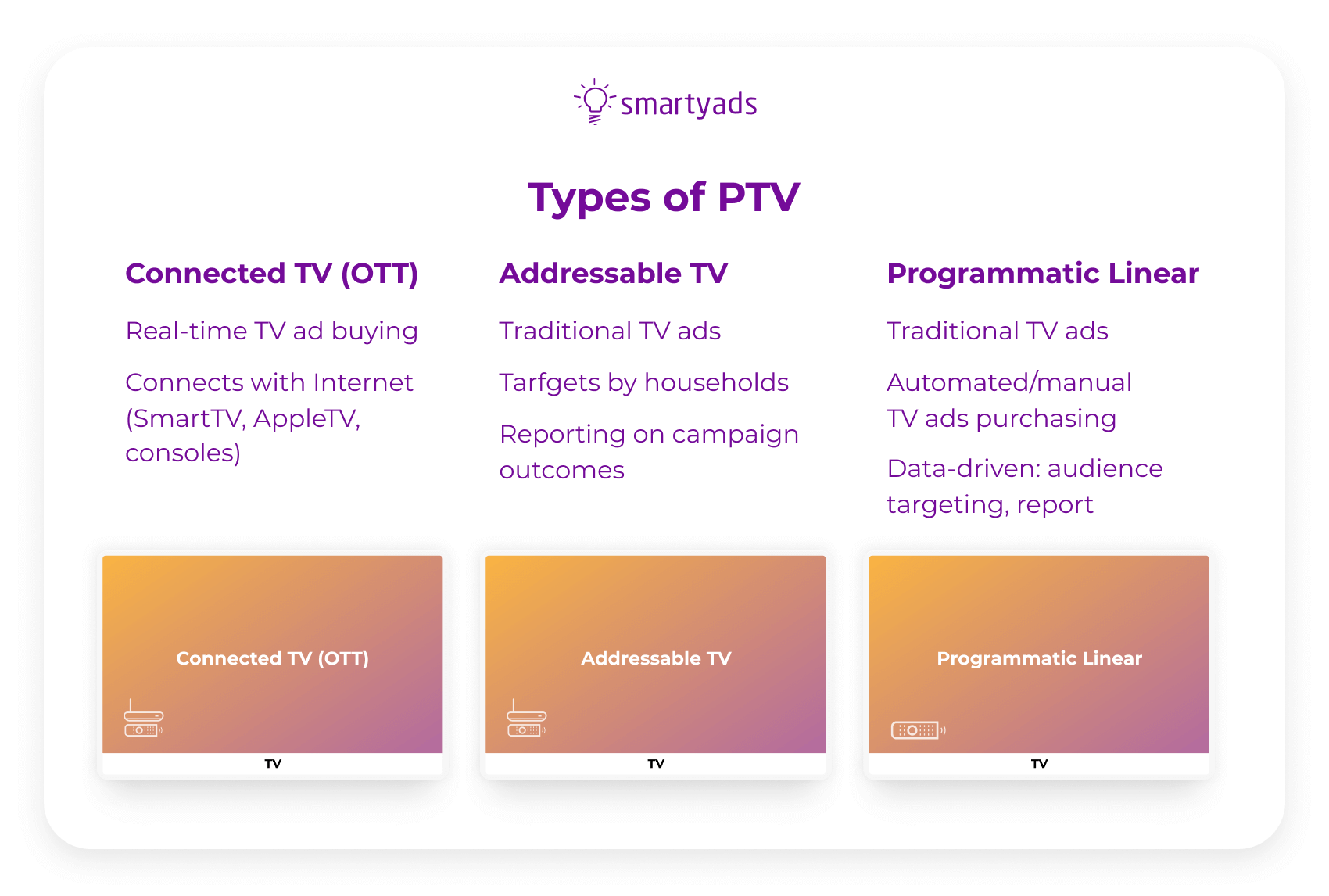
These three work together as one chain. OTT is the content people stream. CTV is the screen where they watch it. PTV is the buying method that makes ads on both OTT and CTV smarter, data-driven, and measurable.
This shift is huge for brands. They don’t need to fight for expensive “prime time” slots anymore. Now they can reach people across platforms, devices, and formats — with full control over who sees the ad and how often.
In programmatic advertising, OTT, CTV, and PTV don’t compete. They work together. It’s one ecosystem that mirrors how people actually watch today and helps brands connect with audiences where they’re most engaged.
Benefits of connected TV advertising
Connected television brings together the best of TV and digital. It gives scale, precision, and CTV ad performance in one place. Here are the key advantages that make it stand out:
Budget efficiency and household viewing
With CTV advertising, one ad often reaches more than one person. Families and couples watch together, so a single impression delivers multiple exposures. This makes every dollar go further. Advertisers get the impact of TV without overspending, while still enjoying the emotional pull of the big screen.

Advanced targeting and retargeting
CTV advertising doesn’t waste impressions on broad audiences. Brands can target by age, gender, income, or location. You can also retarget people who’ve already visited your site or interacted with another ad. This makes every view count and increases the chance of conversion.
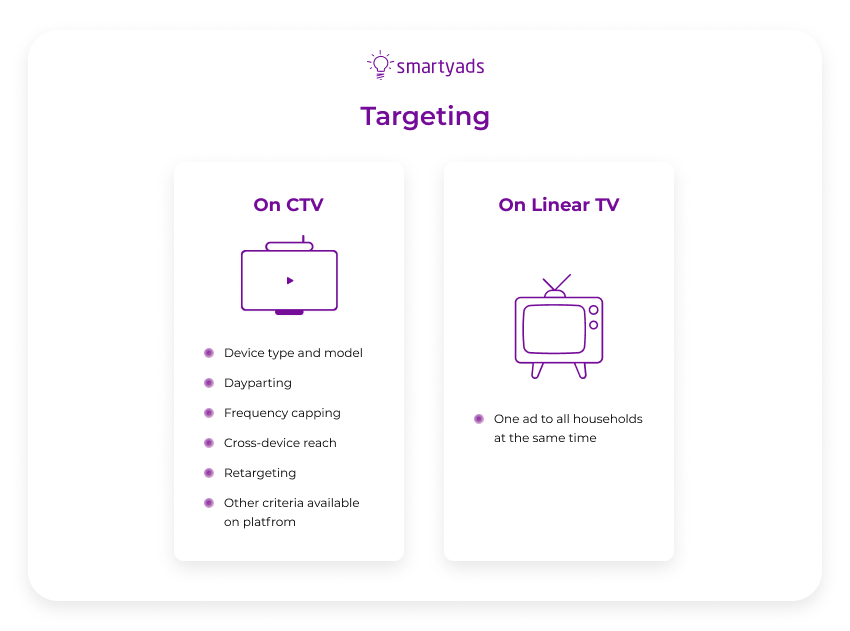
Measurable performance
Traditional TV leaves advertisers guessing. CTV advertising changes that.Every impression is measured. You can track completion rates, engagement, or even conversions. Brands see how their ads perform and adjust connected TV campaigns right away.
Cross-device reach
CTV ads don’t live only on the TV screen. Campaigns can follow the viewer across devices. That means the same person sees your brand message consistently, no matter where they watch. It creates a smoother customer journey.
Brand safety and premium inventory
Most CTV ad platforms work with trusted publishers and licensed content. This means your ads show up in safe, brand-friendly spaces. No need to stress about shady sites or low-quality placements — your brand stays protected.
Strong viewer engagement
Viewers on CTV are highly engaged. They choose what to watch, when to watch, and often stream without distractions. That’s why CTV advertising usually has higher completion rates than mobile or desktop. People pay attention — and brands get noticed.

Measuring CTV advertising performance
Measuring CTV ads is not the same as measuring regular digital campaigns. Clicks don’t tell the whole story here. Nobody “clicks” their TV with a mouse. Instead, people watch, pay attention, and often grab a second device to act later.
That’s why brands need metrics that show how viewers actually behave. The focus shifts to views, completion rates, reach, and what happens after the ad. These numbers give the real picture of campaign success.
Here are the key metrics that show how a CTV campaign is really working. They help advertisers spot what’s going well, what’s not, and where to adjust.
Cost Per Completed View (CPCV)
CPCV shows what you pay only when someone watches your ad to the end. It’s not about half views or skipped seconds. You pay once the full message is delivered. Think of it as paying for a finished conversation, not one that got cut off midway.
Video Completion Rate (VCR)
VCR measures the percentage of viewers who watched the ad all the way through. High VCR means your content is relevant and engaging. On CTV, completion rates are usually higher than on mobile or desktop because viewers are more focused.
Cost Per Mille (CPM)
CPM shows the cost of 1,000 ad impressions.CPM is a common metric in digital ads, but in CTV it shows only part of the picture. A low price per thousand impressions can look great on paper. But if people don’t watch to the end or engage, it means little. Think of it like buying cheap tickets to a show where half the crowd leaves before it’s over. That’s why CPM should always be read together with other results.
Reach and frequency
Reach shows how many unique households saw your ad. Frequency tells how many times they saw it. Both matter for CTV. Too low frequency means viewers may forget your message. Too high frequency can cause fatigue. The right balance builds awareness without overspending.
Attribution and conversions
Attribution connects ad exposure to actions. For CTV, this may include website visits, app downloads, or purchases made after seeing the ad. Many viewers use a second screen — phone or laptop — while watching TV. Tracking these cross-device actions helps prove campaign impact.
Brand lift
Brand lift measures the change in how people perceive your brand after seeing the ad. It’s often tracked with surveys or studies. Advertisers look at awareness, recall, and purchase intent. On CTV, brand lift can be significant because ads play on the largest screen in the home, where attention is higher.
Time spent and engagement
This shows how long viewers stay with your ad and how they interact with it. Some CTV ads are clickable or include QR codes. Others drive viewers to a second screen. Tracking engagement beyond simple views helps reveal if the creative message really resonates.
Incremental reach
Incremental reach shows how many people you reach on CTV that you wouldn’t reach on traditional linear TV. It highlights the added value of connected campaigns. For advertisers, this proves that CTV is not just replacing TV — it’s extending the audience.
Measuring CTV advertising goes far beyond counting clicks. The real picture comes from metrics like CPCV, VCR, reach, and attribution. They show if the ad was not only delivered but also watched, remembered, and acted on. It’s like checking not just if the ball was thrown, but if it was caught and scored. These insights help brands see real ROI and adjust future campaigns.
Best Practices for CTV Campaigns from SmartyAds
Launching a CTV campaign is not just about placing an ad on a smart TV. It’s about combining the right message, the right audience, and the right technology. Advertisers who follow best practices usually see lower costs per completed view and higher engagement.
Here are the proven strategies we recommend at SmartyAds:
Invest in high-quality creatives
On a big TV screen, nothing stays hidden. Blurry visuals, poor sound, or rough editing stand out right away and can hurt the brand. That’s why quality production isn’t a luxury — it’s a must. Think of it as showing up to a meeting: you want to look and sound your best.
Good CTV ads use sharp visuals, clean audio, and clear branding. The message should be simple, emotional, and direct. You don’t have much time to grab attention, so the hook must come in the first few seconds.
Short formats usually work best — 15 to 30 seconds. But within this time, a story still needs to unfold. It should feel like part of the content, not a break from it. When the ad looks and sounds good, viewers watch it to the end. This means fewer wasted impressions and stronger impact for every dollar spent.
Use precise audience targeting
The strength of CTV advertising is not in reaching everyone, but in reaching the right people. Instead of shouting into a crowd, brands can talk directly to the audience that matters most.
Targeting can be broad, like age or gender, or much more detailed — income, lifestyle, even household type. You can also aim by location, reaching people in certain regions, cities, or zip codes. It’s like choosing between casting a wide net or using a fishing rod to catch exactly the fish you want.
Retargeting goes a step further. If someone visited your site or already saw your ad, you can show them a reminder on their TV screen. It’s like a gentle nudge that keeps your brand fresh in their mind and pushes them closer to action.
Precise targeting means your ads don’t get lost on the wrong screens. Your budget reaches the households most likely to watch, engage, and take action. Less money wasted, more value gained — like aiming with a spotlight instead of lighting up the whole stadium.
Control ad frequency
Seeing the same ad too many times can annoy viewers. Seeing it too rarely makes them forget it. The key is balance. That’s why frequency caps matter.
With CTV, you can control how often each household sees your ad. Two to three times per week often works well. Enough to build awareness, not too much to cause fatigue. Smart frequency control keeps the audience engaged and protects your budget from overspending.
Test and optimize creatives
No single ad works for everyone. That’s why testing is so important. Create a few versions of your ad with different visuals, messages, or calls to action. Run them side by side. See which one performs best.
This process is simple but powerful. A small change in copy or design can boost completion rates or conversions. Regular testing and optimization make campaigns stronger and help lower cost per completed view.
Measure and adjust in real time
The beauty of CTV is transparency. You see results as they happen. Metrics like completion rate, CPCV, and reach make it clear what works and what doesn’t.
If one creative falls flat, swap it. If one audience segment drains the budget, shift the spend. Real-time tweaks keep campaigns sharp and budgets under control. Think of it as steering a car — small turns at the right moment keep you on the road to results.
Think cross-device
Viewers don’t live on one screen. They watch TV, scroll on their phones, check emails on laptops — often at the same time. That’s why CTV campaigns work best when connected with other channels.
When someone sees your ad on TV and later notices the same brand on their phone, it clicks. Recognition grows. A cross-device approach ties all touchpoints together and makes the journey seamless. It’s like leaving small signposts that guide people toward conversion.
Add interactivity where possible
CTV ads don’t have to be one-way. A QR code, a clickable overlay, or a shoppable format can invite viewers to act right away. Scanning a code for a discount or to learn more feels simple and natural when the ad itself is engaging.
Interactivity turns passive watching into participation. It closes the gap between seeing and doing. As a result, engagement grows, recall is stronger, and actions happen faster.
Tell a story, not just sel
A CTV ad is still a story — only this time it plays on the biggest screen in the home. Even 15 or 30 seconds need structure: a start, a middle, and a finish.
Don’t just list features. Focus on emotions. People remember the feeling your ad gave them more than the product itself.
A strong story hooks attention from the first second and lingers after the screen goes dark. It builds trust, sticks in memory, and plants the seed for long-term loyalty.
Safe placements protect your image and keep campaigns professional. Partnering with reliable platforms means your ads appear in the right context, reaching audiences without risks.
Final thoughts
Connected TV is no longer a buzzword. It has become the new standard in digital advertising. Viewers are leaving linear TV behind and turning to streaming and connected devices. For advertisers, this is a chance to meet people where they are — in a way that feels natural and personal.
The real power of CTV advertising is in balance. It keeps the magic of television — the big screen, shared moments, and emotions but adds what TV never had before. Precision targeting. Real-time data. Full control.
That’s why marketers don’t see CTV as a test anymore. They see it as one of the most effective channels to invest in today.
At SmartyAds, we help brands unlock the real power of CTV. Our platforms connect advertisers with premium inventory worldwide, smart targeting, and clear measurement tools. With over a decade in programmatic and multiple international awards, we bring more than technology — we bring trust.
We work side by side with marketers to keep campaigns smooth, costs under control, and every impression meaningful. Whether the goal is awareness, engagement, or direct response, we have the tools and experience to deliver.
Ready to grow with confidence? Register on SmartyAds today and see how Connected TV can take your campaigns to the next level!
FAQ
CTV advertising puts your brand on the biggest screen at home. It combines precise targeting with premium reach. Campaigns launched through CTV ad platforms get higher engagement, measurable results, and brand-safe placement. Want to see how it works? Explore here.
It depends on your goals. The best CTV ad platforms offer premium inventory, transparent reporting, and advanced targeting. SmartyAds delivers global reach with 10+ years of programmatic experience. See why brands trust us here.
Many advertisers skip data insights, go too broad with targeting, or use weak creatives. To make CTV advertising effective, focus on smart frequency control, creative quality, and analytics. Avoid these mistakes and boost ROI with expert support here.

